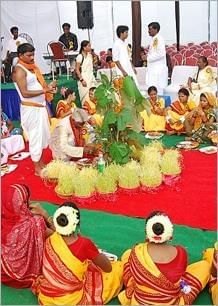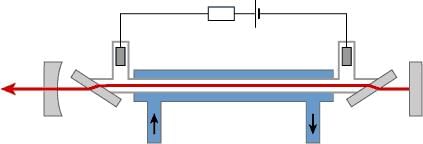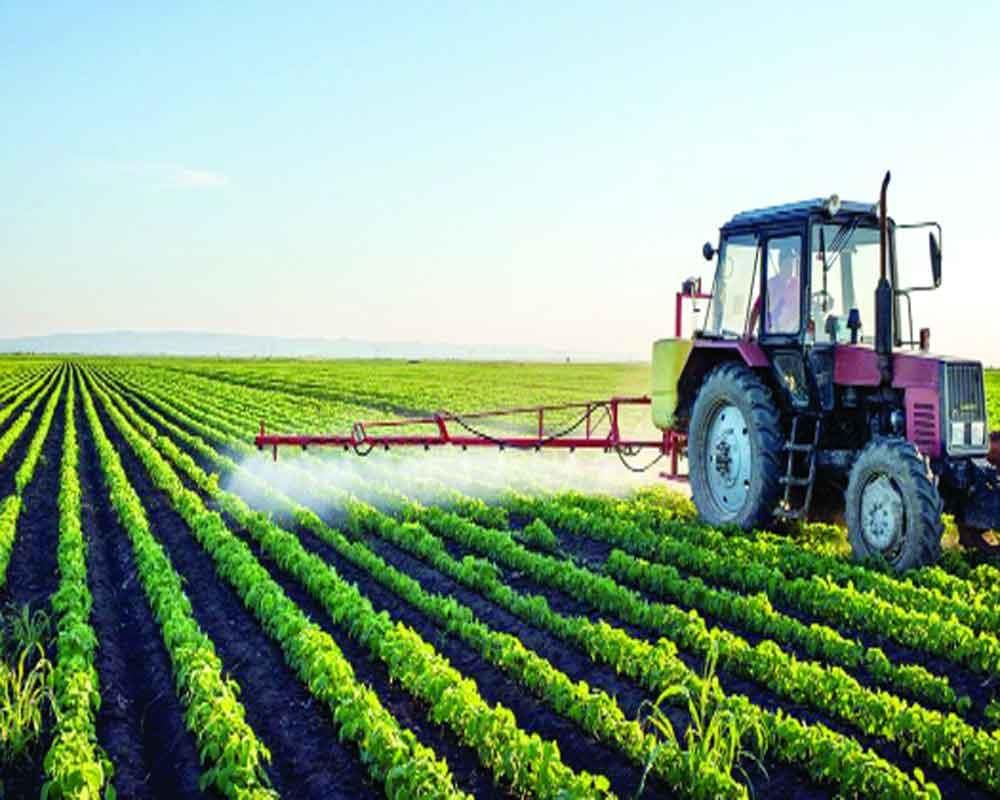UPSC Daily Current Affairs: 1st April 2025 | Current Affairs & Hindu Analysis: Daily, Weekly & Monthly PDF Download
GS3/Science and Technology
Polar Orbit
Why in News?
Recently, SpaceX made headlines by successfully launching a private astronaut crew on a historic polar-orbiting mission aboard a Falcon 9 rocket from NASA’s Kennedy Space Center in Florida.
- Polar orbits are a type of Low Earth Orbit (LEO) that allows satellites to travel from one pole to the other.
- The Fram2 mission marks the first human spaceflight utilizing a polar orbit.
- SpaceX's mission highlights the increasing role of private companies in space exploration.
Additional Details
- Polar Orbit (PO): This orbit ranges from 200 km to 1,000 km in altitude and is characterized by a trajectory that deviates no more than 10 degrees from the North-South axis.
- Significance: Polar orbits enable satellites to cover the entire Earth's surface over time as the planet rotates below, making them essential for Earth observation, climate monitoring, and reconnaissance missions.
- Fram2 mission: As SpaceX's sixth private astronaut mission, it showcases the company's continued dominance in the commercial spaceflight sector, reducing reliance on government space agencies.
- Reusable Spacecraft: The mission utilized the Crew Dragon capsule, a reusable spacecraft developed by SpaceX with NASA funding, demonstrating the effectiveness of reusability in reducing costs, with 16 crewed missions successfully conducted.
The success of the Fram2 mission not only represents a significant milestone in human spaceflight but also underscores the evolving landscape of space exploration, where private enterprises play pivotal roles alongside traditional government agencies.
GS3/Economy
Centre to Own Nearly 49% of Vodafone Idea
 Why in News?
Why in News?
The Indian government is set to increase its stake in Vodafone Idea (Vi) to nearly 49% by converting an additional ₹36,950 crore of the company’s dues into equity. This move will make the government the largest shareholder, having previously held about 23%, while the promoters will maintain operational control.
- The government will acquire 3,695 crore shares at ₹10 per share, despite the market price being ₹6.8, indicating a premium of over 47%.
- The dues mainly consist of outstanding spectrum auction payments and deferred liabilities following a moratorium.
Additional Details
- Background: Vodafone Idea is facing significant financial challenges due to the Supreme Court's ruling on Adjusted Gross Revenue (AGR) dues, resulting in substantial debt and penalties.
- AGR Definition and Controversy: The Department of Telecom (DoT) defines AGR to include all revenues, including non-telecom sources, leading to disputes with telecom operators.
- The Supreme Court ruled in favor of the government in October 2019, expanding the AGR definition, which was upheld in September 2020.
- The government introduced relief measures in 2021, providing a four-year moratorium on spectrum and AGR dues and allowing the conversion of interest on deferred payments into equity.
- Vi's total debt as of December 2024 is approximately ₹2.3 lakh crore, with ₹77,000 crore in AGR liabilities and ₹1.4 lakh crore in spectrum liabilities.
- Despite the conversion of dues to equity, the company still faces challenges with a total debt of ₹2.1 lakh crore, and this move only reduces the debt by ₹37,000 crore.
The conversion of government dues into equity aids in alleviating some financial pressure on Vodafone Idea, providing a potential runway for the company to navigate its debts. However, it does not eliminate the need for further capital and could lead to dilution for existing shareholders.
GS1/Indian Society
Sarhul Festival Celebrations in Jharkhand
 Why in News?
Why in News?
On April 1, 2025, tribals in Jharkhand and the larger Chhotanagpur region will celebrate Sarhul, marking both the New Year and the arrival of spring.
- Sarhul is a significant Adivasi festival celebrated in parts of Jharkhand, Chhattisgarh, Odisha, and Bihar.
- The festival occurs in the Hindu month of Chaitra, typically three days after the new moon.
- It is celebrated by various tribes, including the Oraon, Munda, Santal, Khadia, and Ho.
Additional Details
- Sal Tree (Shorea robusta): Venerated as the abode of Sarna Maa, the deity who protects the village from calamities.
- The festival symbolizes the union of the Sun and Earth, with the pahan (male priest) representing the Sun and his wife, the pahen, symbolizing the Earth.
- Sarhul also signifies the renewal of life, as it marks the beginning of agricultural activities such as ploughing and sowing crops.
The evolution of Sarhul from a hunting festival to one celebrating agriculture reflects the changing lifestyles of Adivasi communities. It has become a cultural movement aimed at preserving Adivasi heritage amidst urbanization and modernization, reinforcing tribal identity. Over time, it has also emerged as a platform for Adivasi political assertion, with groups advocating for the recognition of Sarna religion and its inclusion in India’s caste census.
Additionally, Sarhul serves as a means to advocate for tribal rights and social justice, particularly through the leadership of figures such as Baba Karthik Oraon.
Consider the following pairs: Tradition - State
- 1. Chapchar Kut festival — Mizoram
- 2. Khongjom Parba ballad — Manipur
- 3. Thong-To dance — Sikkim
Which of the pairs given above is/are correct?
- (a) 1 only
- (b) 1 and 2
- (c) 3 only
- (d) 2 and 3
GS1/History & Culture
Tribhuvandas Patel and the Cooperative Movement
Why in News?
The Lok Sabha has recently passed a bill to establish the Tribhuvan Sahkari University in Anand, Gujarat, named in honor of Tribhuvandas Patel, a key figure in the cooperative movement and a foundational leader of Amul.
- Tribhuvandas Patel is recognized as the father of the cooperative movement in India.
- He played a pivotal role in founding the Kaira District Cooperative Milk Producers’ Union in 1946.
- Patel was heavily influenced by Mahatma Gandhi and actively participated in various social movements.
Additional Details
- Early Life: Born in 1903 to a farming family in Gujarat, Patel was strongly influenced by Gandhi's principles from a young age.
- Political Activism: He was involved in the civil disobedience movement and was jailed multiple times for his activism, including during the salt satyagraha in 1930.
- Kaira District Cooperative Milk Producers' Union (KDCMPUL): Established as a response to the exploitation of farmers by Polson Dairy, it aimed to empower local milk producers.
- Inclusivity in Cooperatives: Patel insisted that village cooperatives be open to all milk producers, regardless of caste or community.
- Impact on Dairy Development: He invited Dr. Verghese Kurien to KDCMPUL, who later led the White Revolution in India.
- Recognition: Patel received many awards for his contributions, including the Ramon Magsaysay Award in 1963 and the Padma Bhushan in 1964.
Tribhuvandas Patel's legacy continues to inspire cooperative movements across India, showcasing the importance of community-driven initiatives in rural development.
GS3/Economy
NITI NCAER States Economic Forum Portal
Why in News?
The Union Finance Minister is set to unveil the "NITI NCAER States Economic Forum" portal in response to concerns raised by opposition-ruled states regarding perceived inequalities in resource allocation.
- The portal is a collaborative initiative by NITI Aayog and the National Council of Applied Economic Research (NCAER).
- It serves as a comprehensive database covering social, economic, and fiscal data spanning approximately 30 years, from 1990-91 to 2022-23.
Additional Details
- State Reports: These reports provide a summary of the macroeconomic and fiscal conditions of 28 Indian states, focusing on indicators such as demography, economic structure, and socio-economic factors.
- Data Repository: This feature grants users direct access to a complete database organized into five categories: Demography, Economic Structure, Fiscal, Health, and Education.
- State Fiscal and Economic Dashboard: This component presents graphical displays of key economic indicators over time and includes raw data access through appendices and summary tables.
- Research and Commentary: This section compiles extensive research on state finances, fiscal policies, and financial management at both state and national levels.
The portal aims to enhance the understanding of macroeconomic, fiscal, demographic, and socio-economic trends through easily accessible data presented in a user-friendly format. It will also address the crucial need for consolidated sectoral data, allowing for effective benchmarking against other states and national figures. Additionally, it will serve as a platform for policymakers, researchers, and stakeholders to engage in informed discussions based on the available data. Ultimately, by utilizing historical trends and real-time analytics, users will have the tools necessary to monitor progress, identify emerging patterns, and create evidence-based policies for development.
GS2/Governance
NEP 2020 in the Classroom, From Policy to Practice
Why in News?
The National Education Policy (NEP) 2020 emphasizes the importance of Foundational Literacy and Numeracy (FLN) as a national priority, aiming for every child to acquire these skills by Class 2. While significant steps have been taken by governments to implement FLN initiatives, challenges remain in diverse educational settings across India.
- Over 80% of surveyed rural schools received government directives on FLN for Classes 1 to 3.
- 75% of these schools had at least one teacher trained in FLN strategies.
- Implementation of FLN varies significantly due to diverse classroom challenges.
Additional Details
- Policy Implementation: The Annual Status of Education Report (ASER) 2024 reveals that awareness of FLN initiatives is high, yet actual implementation varies based on local conditions.
- Teacher Training Quality: Many training sessions are theoretical, lacking practical classroom application. Short training durations and inconsistent support hinder effective FLN adoption.
- Post-Training Support: Gaps in mentorship and monitoring often leave teachers without the necessary guidance to implement FLN methods effectively.
- Teaching-Learning Materials (TLM): Teachers often use TLM in demonstration mode, limiting student interaction and engagement due to concerns over material damage and unclear usage guidelines.
- Syllabus Completion vs. FLN Assessment: The emphasis on completing syllabi conflicts with the need for individualized learning assessments, hindering FLN adoption.
Moving forward, improving teacher training and support systems is crucial for enhancing FLN implementation. Continuous professional development, structured mentorship programs, and better integration of TLM in classrooms are essential for overcoming the existing challenges. Despite these issues, the introduction of NIPUN Bharat has resulted in notable improvements in foundational learning outcomes.
GS2/International Relations
Exercise Tiger Triumph
 Why in News?
Why in News?
The fourth edition of the tri-service exercise called 'Tiger Triumph' is set to commence in the Bay of Bengal, involving military forces from both India and the United States.
- This exercise focuses on Humanitarian Assistance and Disaster Relief (HADR) operations.
- It aims to improve interoperability between the Indian and U.S. armed forces.
- Standard Operating Procedures (SOPs) for establishing a Combined Coordination Centre (CCC) will be formulated during the exercise.
Additional Details
- Participants: The Indian contingent includes naval ships such as Jalashwa, Gharial, and Mumbai, along with integral helicopters and landing crafts, the Long Range Maritime Patrol Aircraft P8I, army troops from the 91 Infantry Brigade and 12 Mechanical Infantry Battalion, and Air Force C-130 aircraft and MI-17 helicopters.
- U.S. Representation: The U.S. will be represented by navy ships Comstock and Ralph Johnson, along with troops from the US Marine Division.
- Both nations will participate in additional activities such as training visits, subject matter expert exchanges, sports events, and social interactions.
This collaborative exercise underscores the growing defense ties between India and the U.S. and aims to enhance their capabilities in responding to humanitarian crises.
GS3/Health
Non-Alcoholic Fatty Liver Disease (NAFLD)
Why in News?
The district of Ranchi is preparing to launch a comprehensive campaign aimed at screening and managing non-alcoholic fatty liver disease (NAFLD), making it the first district in Jharkhand to undertake such an initiative.
- NAFLD is now referred to as Metabolic dysfunction-associated steatotic liver disease (MASLD) and is characterized by an accumulation of fat in the liver that is not linked to heavy alcohol consumption.
- While early-stage NAFLD typically causes no harm, it can progress to severe liver complications, including cirrhosis and liver cancer.
Additional Details
- Health Risks:High levels of liver fat are associated with increased risks of serious health issues such as:
- Diabetes
- High blood pressure
- Kidney disease
- Population at Risk: NAFLD is particularly prevalent among individuals with conditions such as obesity and type 2 diabetes, affecting people of all ages, including children.
- Treatment Options: Currently, there are no specific medications for NAFLD. The primary recommendation is weight loss, which can help reduce liver fat, inflammation, and fibrosis. Management of associated conditions like high blood pressure and diabetes is also advised.
This campaign in Ranchi represents a significant step forward in addressing NAFLD, aiming to improve public health through early detection and management of this common yet serious condition.
GS3/Science and Technology
Abel Prize 2025 Awarded to Masaki Kashiwara
 Why in News?
Why in News?
The esteemed Abel Prize for mathematics has been awarded to the Japanese mathematician Masaki Kashiwara for his exceptional contributions to the fields of algebraic analysis, representation theory, and sheaf theory.
- The Abel Prize recognizes groundbreaking achievements in mathematics.
- Named after Norwegian mathematician Niels Henrik Abel, the prize was established in 2002.
- It is administered by the Norwegian Academy of Science and Letters on behalf of the Norwegian government.
- The prize includes a monetary award of 7.5 million kroner (approximately USD 720,000) and a glass plaque by artist Henrik Haugan.
Additional Details
- Abel Prize: Established to honor mathematicians for their pioneering work, it is often compared to a Nobel Prize in mathematics.
- Masaki Kashiwara's Contributions: Kashiwara has made significant advancements in algebraic analysis and representation theory, particularly through his development of D-modules and the discovery of crystal bases.
- His work has addressed longstanding mathematical problems and created new research pathways by linking previously unrelated areas.
- For example, through the discovery of crystal bases, he simplified complex calculations into more manageable graphical representations.
The Abel Prize continues to celebrate outstanding mathematical achievements and fosters continued innovation in the field.
GS3/Science and Technology
Carbon Dioxide (CO₂) Lasers
 Why in News?
Why in News?
Physicists in the United States have successfully demonstrated a new method for remotely detecting radioactive materials using carbon dioxide (CO₂) lasers. This advancement could significantly enhance safety and monitoring capabilities in various fields.
- The first CO₂ laser was created by Indian-American scientist C.K.N. Patel.
- CO₂ lasers operate using the vibrational energy states of CO₂ molecules and are known for their efficiency.
- New detection techniques using CO₂ lasers show improved range and sensitivity in identifying radioactive materials.
Additional Details
- About CO₂ Lasers:
CO₂ lasers are four-level molecular gas lasers that utilize the vibrational energy states of carbon dioxide molecules. They are characterized by:
- A structure comprising one carbon atom and two oxygen atoms.
- Three independent vibrational modes: Symmetric Stretching Mode, Bending Mode, and Asymmetric Stretching Mode.
- Principle of Operation: The laser transition in CO₂ occurs through a process where energy is transferred from excited nitrogen (N₂) molecules to CO₂, creating the necessary population inversion for laser action.
- Characteristics of CO₂ Lasers:
- Type: Molecular gas, four-level laser
- Active Medium: Mixture of CO₂, N₂, and Helium (He)
- Pumping Method: Electrical discharge
- Optical Resonator: Concave mirrors
- Power Output: Up to 10 kW
- Output Nature: Continuous wave (CW) or pulsed wave
- Wavelengths: 9.6 µm & 10.6 µm (Infrared region)
- Detection Mechanism:
The detection method involves:
- Radioactive decay ionization: Radioactive materials emit charged particles that ionize the air, forming plasma.
- Avalanche effect: Free electrons in plasma gain energy, leading to a chain reaction of ionization.
- Laser Characteristics: The CO₂ laser emits long-wave infrared radiation, which enhances sensitivity and minimizes unwanted ionization.
- Fluorescence imaging: This technique is used to analyze plasma dynamics and electron distribution.
- Advancements in Detection Range:
The new CO₂ laser technique has dramatically improved the detection range for radioactive materials:
- Alpha particle detection: Successfully detected from 10 meters away, a tenfold improvement over previous methods.
- Gamma ray detection (Cs-137): Potentially detectable from 100 meters, with future possibilities extending beyond 1 kilometer with further advancements.
This new method using CO₂ lasers not only enhances the safety protocols for detecting radioactive materials but also opens avenues for further research in remote sensing technologies.
GS3/Economy
Mechanisation Beyond Tractors
 Why in News?
Why in News?
Farm mechanization in India has often been synonymous with tractors, which have replaced traditional bullocks in various agricultural tasks such as ploughing, cultivating, and transportation. Tractors provide a significantly higher power output—typically between 41-50 horsepower—compared to the mere 1 horsepower of bullocks. The Indian tractor market sees approximately 9 lakh units sold annually, with a typical price of around Rs 7 lakh for a 45 hp model, culminating in a market size of Rs 60,000 crore.
- Farm mechanization extends beyond just tractors; it includes various attachments that enhance farming efficiency.
- The market for farm machinery, although growing, is not yet at the scale of tractor sales.
- Custom hiring is emerging as a viable alternative for farmers to access advanced machinery without the high costs.
Additional Details
- Advantages of Tractor-Powered Equipment: Unlike bullock-drawn ploughs, which are limited to primary tillage at depths of 4-6 inches, tractor-powered equipment such as rotavators can perform both primary and secondary tillage in a single pass, reaching depths of 8-12 inches. This leads to improved soil aeration, water infiltration, and root penetration.
- Market Dynamics: The market for farm machinery like rotavators is expanding, with rotavators alone representing a market of 200,000 units valued at Rs 2,000 crore annually. Key players include Tirth Agro Technology, Shaktiman, Mahindra & Mahindra, and International Tractors/Sonalika.
- Mechanization to Address Labour Shortages: Equipment such as rotavators and harvesters are crucial in addressing labour shortages in agriculture, enhancing operational efficiency.
The future of farm mechanization in India holds significant growth potential, particularly as it continues to modernize harvesting and tillage equipment. The transition from manual labour to mechanization not only improves efficiency but also reduces costs for farmers.
|
38 videos|5288 docs|1117 tests
|
FAQs on UPSC Daily Current Affairs: 1st April 2025 - Current Affairs & Hindu Analysis: Daily, Weekly & Monthly
| 1. What is the significance of Polar Orbit in satellite technology? |  |
| 2. What does the announcement of Centre owning nearly 49% of Vodafone Idea imply for the telecom sector? |  |
| 3. What are the key highlights of the Sarhul Festival in Jharkhand? |  |
| 4. How has NEP 2020 impacted classroom practices in India? |  |
| 5. What is Non-Alcoholic Fatty Liver Disease (NAFLD) and why is it a growing concern? |  |
















